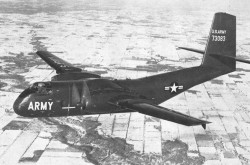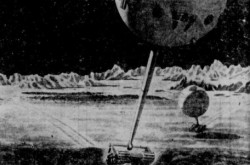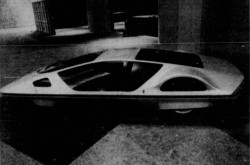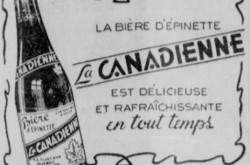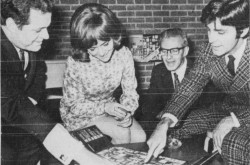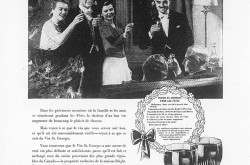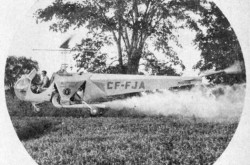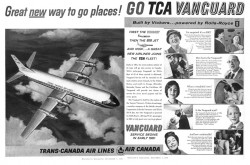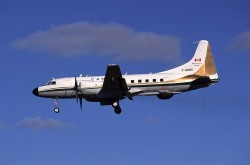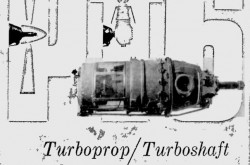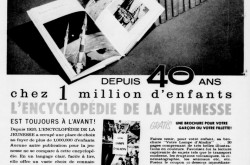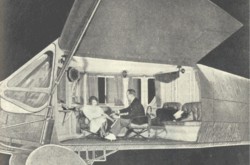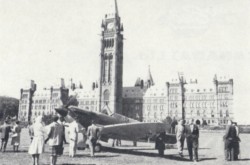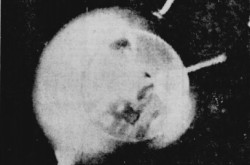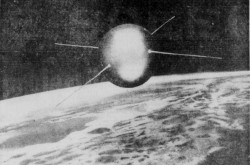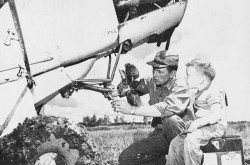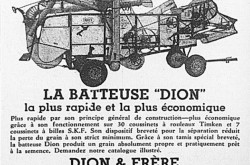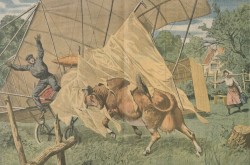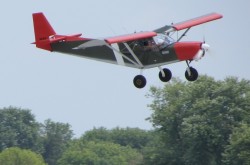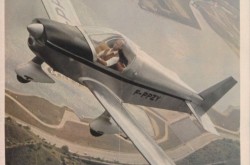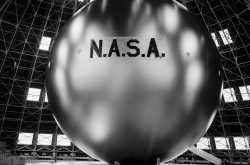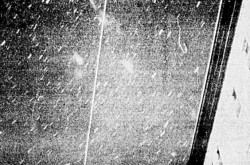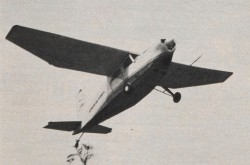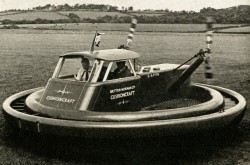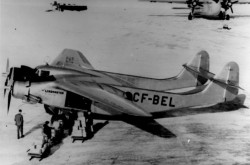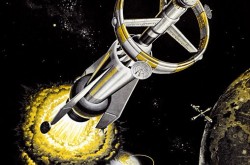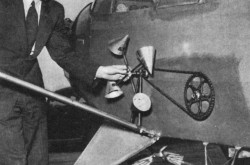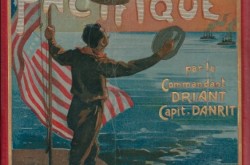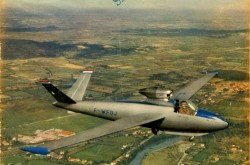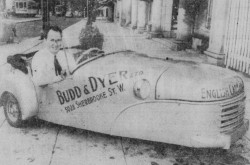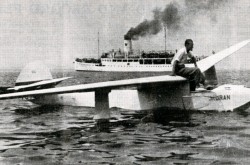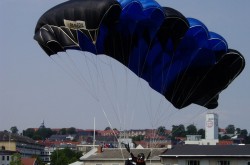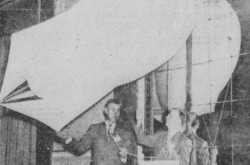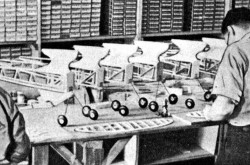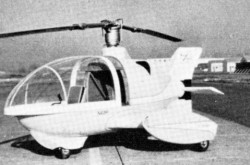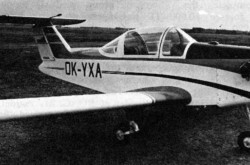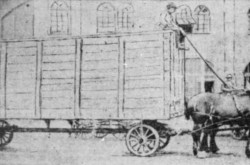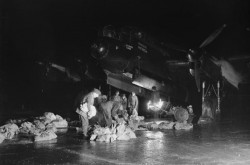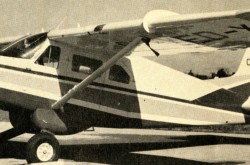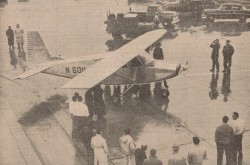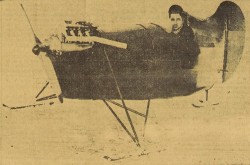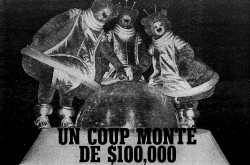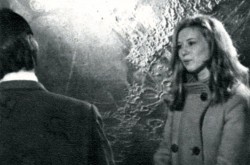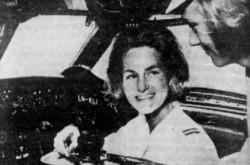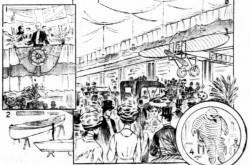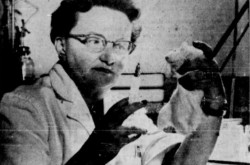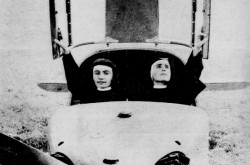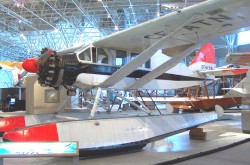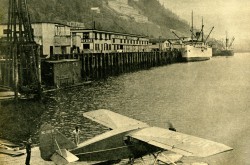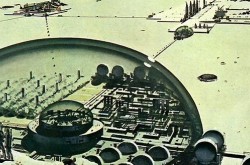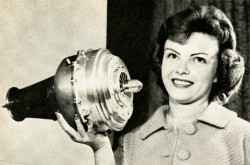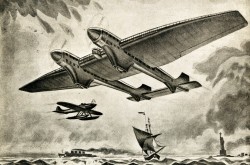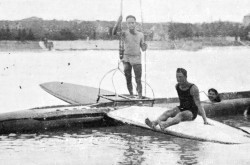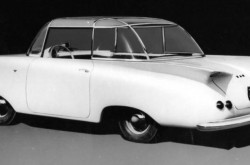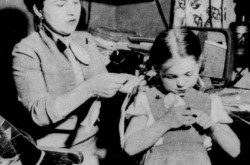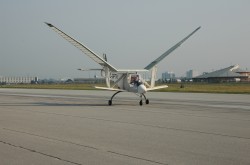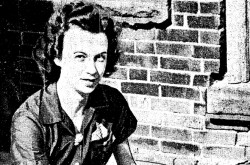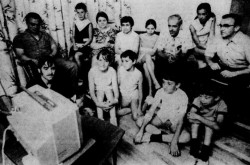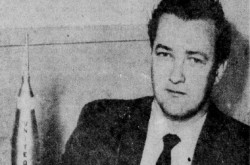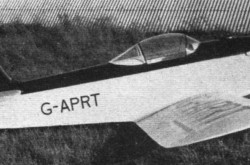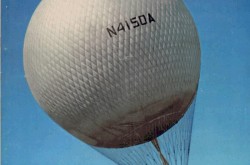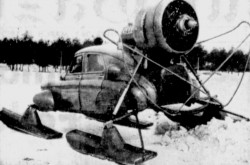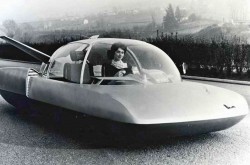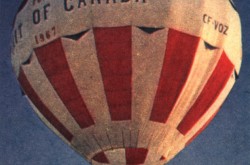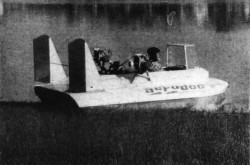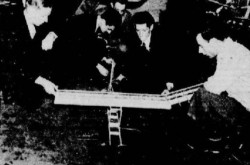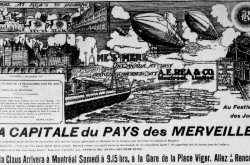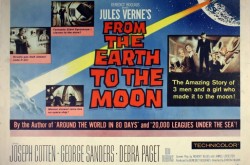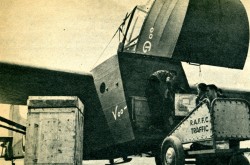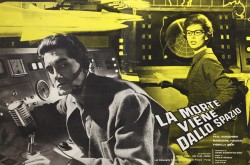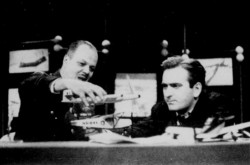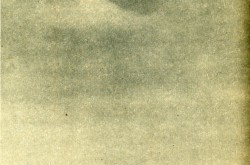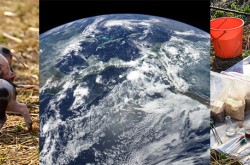Québec / Canada and the simplest satellite, the PS-1 spacecraft, in other words Sputnik 1: An overview of what was published in the French language Québec press between 5 and 12 October 1957, Part 3

Bienvenue, welcome, my reading friend, and… Um, yes, I am aware that World Space Week 2020 has been over for about a week, and… I am also aware that the question asked in the first part of this article (How the daily and weakly, sorry, weekly French language Québec press described what was being done and said in Canada and, more specifically, Québec, about the first artificial satellite, the Soviet Sputnik 1) has not been fully explored in the first 2 parts of this article. This is what explains the creation of this third part. Believe me, I was / am as surprised as you are by the extent of the coverage offered by the Québec press in October 1957.
So, let us resume our discussion in order to complete this article before the end of October 2020. I do not want the computer loaned by my employer, the illustrious Canada Aviation and Space Museum, in Ottawa, Ontario, to turn into a pumpkin or, worse still, a bar of milk chocolate.
Let us pick up the thread of our story at star date -365230, and… You don’t know anything about star dates? Seriously? Sigh. Let us therefore pick up the thread of our story on Geng-Xu 16, 4655 and… Still nothing? Big sigh. 9 October 1957, you know that one?
You will obviously be overwhelmed, yes, yes, overwhelmed, with enthusiasm, when you learn that an engineer from the Chalk River Nuclear Laboratories of Atomic Energy of Canada Limited, near Chalk River, Ontario, Norman L. Williams, mentioned to a journalist that many of his colleagues had observed the Soviet satellite using spy-glasses, at around 6:20 a.m., local time, on the morning of 9 October.
One of the first, if not the first editorial cartoon showing the Soviet artificial satellite to be published in a French-language newspaper appeared on 9 October, in a major daily, La Presse of Montréal, Québec. “L’ère des émotions” (The Age of Emotions) by illustrator and cartoonist Pierre Dorion showed a planet Earth afflicted by headaches (disarmament) and a black eye (nuclear experiments) which saw with concern the Soviet satellite circulating endlessly around it. It is at the very beginning of this third part of our article, and…
Your puzzled look, my reading friend, points to the probability that you are about to ask a question. Why is the term sputnik not used in this seemingly endless text? That is indeed a good question. The point was / is that said term may well have been used for the first time in the Québec press in the 9 October edition of La Presse. It accompanied a photograph and… You want to see said photograph, don’t you? Sigh. You do not know how much the inclusion of multiple illustrations makes it harder and slower to upload the items I bring to the world, and… You do not give a rodent’s rear end, right? Sigh.
I guess the presence of the same photograph in the 9 October edition of a Québec, Québec, daily, Le Soleil, leaves you just as indifferent, doesn’t it? Sigh. Here is the photograph…
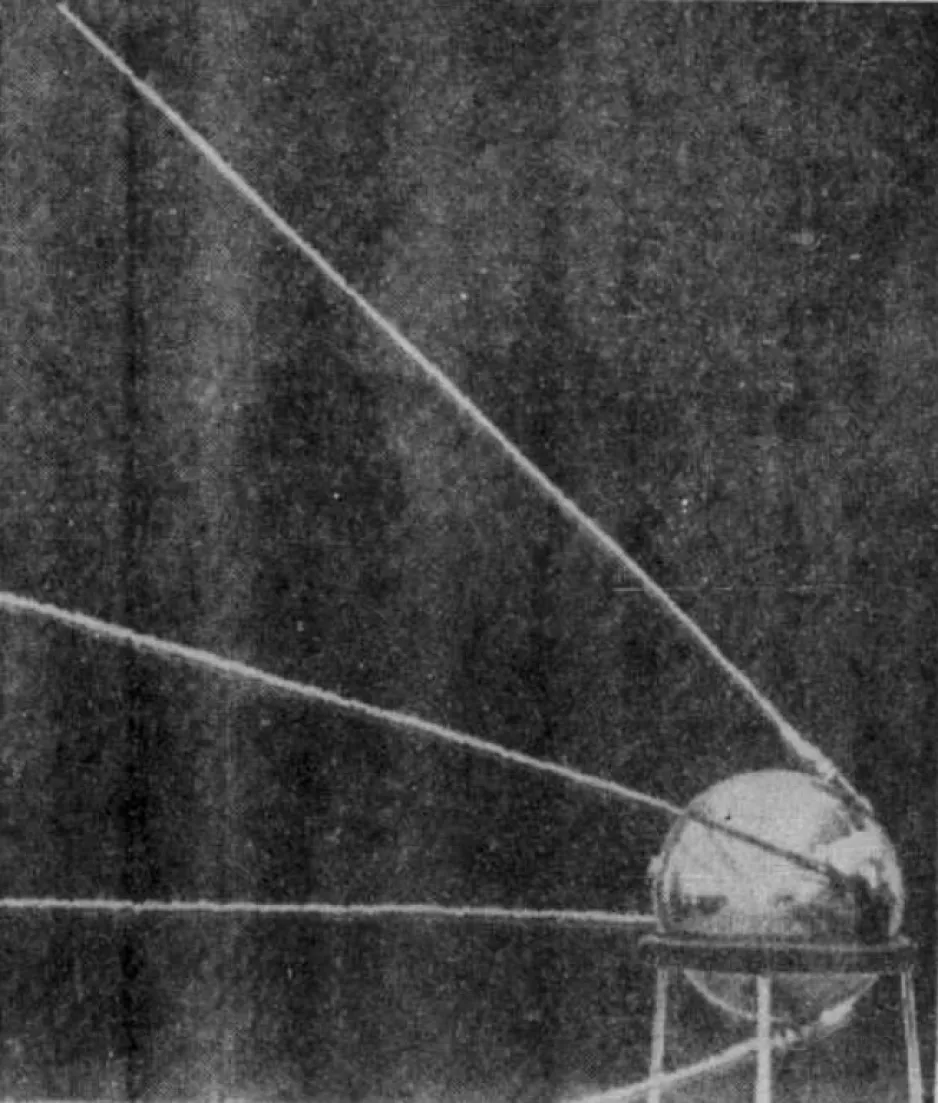
The first official photograph of the Soviet artificial satellite Sputnik I. Anon., « Le ‘bébé-lune’ soviétique. » La Presse, 9 October 1957, 1.
Allow me to point out that the term sputnik was not really used in the October 1957 Québec newspapers consulted for this article.
I should also mention that while Canadian government researchers said they believed that said satellite did not pursue any military objective, the Defence Research Board (DRB), a federal agency mentioned in the first 2 parts of this article, was already studying possible military roles of yet to be satellites. A satellite might well carry cameras capable of taking pictures of military installations. In the longer term, a satellite could just as easily carry a (thermo)nuclear warhead which could strike a target virtually anywhere in the world.
In either case, the countries overflown would not be able to appeal to the concept of airspace or air sovereignty respected and defended until then by these same countries, including Canada of course. While it was true that various national and international bodies had been addressing the issue for several years, the launch of the Soviet satellite gave it much greater importance. In fact, it was said in 1957, it would be necessary before long to negotiate the vertical limits of said airspace – an intimidating prospect to say the least in a situation of Cold War.
While Canadian government researchers remain tuned in to the Soviet satellite, François Baby, one of the directors of the Centre de Québec of the Royal Astronomical Society of Canada, mentioned in the second part of this article, was preparing a program of observation and, if all went well, photography of the Soviet satellite which would begin on 20 October, when it would pass over Québec, at sunrise and / or sunset, the best times to see it. He also wanted to recruit about 15 amateur radio operators from Québec, the province, not the city, to try to track the Soviet satellite, thus facilitating the task of amateur astronomers.
Dostaler O’Leary, an author / columnist / columnist / journalist / editor mentioned in the same second part of this article, mentioned the Soviet satellite in one of his aux quatre points CARDINAUX columns, this time published in the 9 October edition of La Patrie, and…
Uh, you seem confused, my reading friend. Do you want to know if the Baby project led to something concrete? Ahh, my old bones twitch with joy knowing that you have a little bit of interest in this peroration. You should therefore know that, no later than 12 October, 12 amateur radio operators spread across Québec transmitted to a coordinator, Laval Duquette of Sainte-Foy, Québec, the observations made day after day.
That same 12 October, a listening post of the Centre de Québec, erected at top speed at a radio station of the Québec civil defence organisation, in L’Ancienne-Lorette, not far from Québec, picked up signals from the artificial satellite 5 times. A tape recorder made it possible to record and preserve said signals. Staff at the observatory of the Centre de Québec, located within Martello Tower No. 1 on the Plains of Abraham, in Québec, coordinated the listening post and amateur radio operator activities.
Would you believe that the reflector telescope of said Centre de Québec dated / dates from 1866-67? The chaplain of the Hôpital de la Marine de Québec and the Quebec Lunatic Asylum / Asile des aliénés de Beauport, the jesuit Jean Baptiste Zacharie Bolduc, ordered this instrument from Maison Lerebours & Secretan, a renowned instrument maker from Paris, France. The Séminaire de Québec defrayed part of the cost of this reflector telescope soon to be used by Bolduc for the astronomy course he offered to philosophy students at the seminary. The Université Laval in Québec became the owner of this instrument in 1885. The telescope may, I repeat may, have remained on the roof of the Séminaire de Québec between 1892 and 1941, however. The Université Laval lent the reflector telescope, quite damaged by then, to the Centre de Québec of the Royal Astronomical Society of Canada in the year 1941.
Heavily damaged in 1969, by uneducated bozos, while in its dome at the top of the Martello Tower, the reflector telescope was repaired / restored by personnel from the Département de Physique of the Université Laval. Physically incorporated into the Collection du Séminaire de Québec of the magnificent Musée de la Civilisation of Québec, this unique instrument still belonged to the priests of said seminary as of 2020, but back to our story.
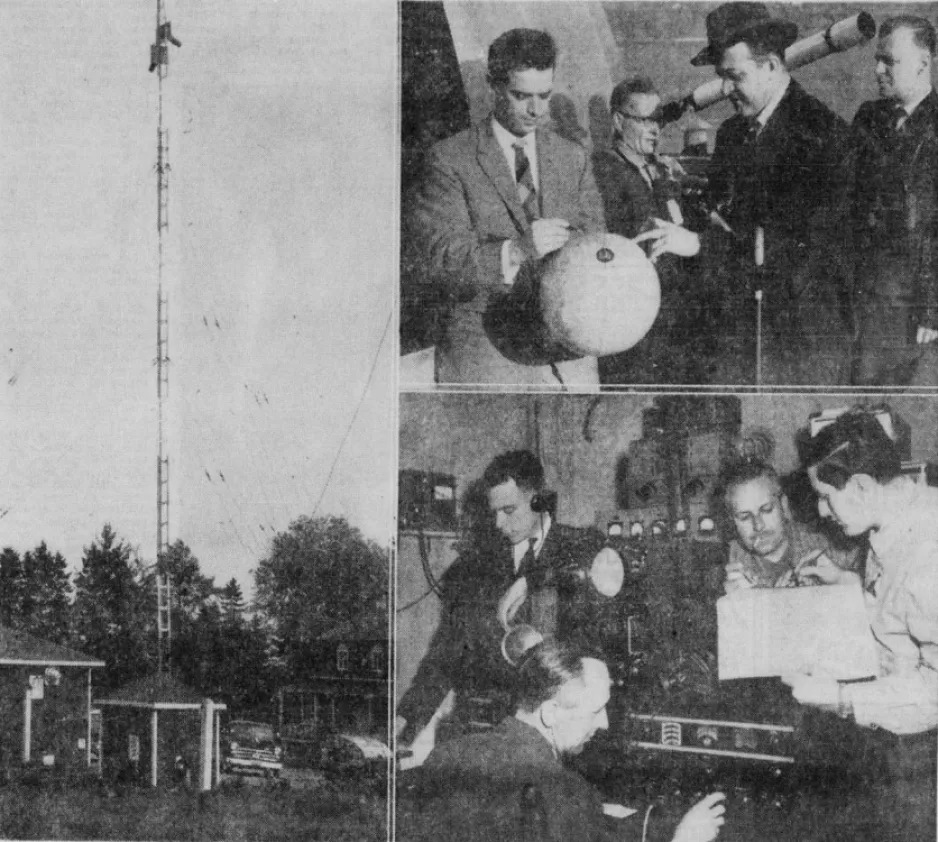
In the photo on the left, the L’Ancienne-Lorette radio station. Top right, a quartet involved in the Baby observation project: Maurice Drolet, Paul Henri Nadeau, Robert Lévesque and J. Alfred Dumont. Bottom right, Drolet and a trio involved in this same project: Bernard Côté, Félix Edge and Bernard Baby. Anon., “Les astronomes de Québec aux aguets.” Le Soleil, 14 October 1957, 13.
Uh, where was I? Ah yes, Baby and his project. Please note, my oh patient reading friend, that yours truly does not know whether Baby or other members of his team managed to photograph the Soviet satellite.
If I may be permitted a tiny digression, well, not that tiny, Drolet was the technical director of one of the hospitals in the Québec region, the Hôtel-Dieu du Sacré-Cœur de Jésus. Fascinated by wireless telegraphy / radio even before the age of 10, in the early 1920s, this amateur radio operator and astronomy enthusiast had organised the Fleur de Lys mission or expedition to the Ungava, in northern Québec, to observe the total solar eclipse of 30 June 1954. Well covered in the Québec region press, said expedition was the first astronomical expedition organised by French-speaking Quebecers. The sky being overcast on the fateful day, the ten or so team members could not see the eclipse well. Pity.
Edge, on the other hand, was director of radio communications for the Québec Ministère de la Voirie and communications officer for the Québec civil defense organisation, in addition to being a respected Québec amateur radio operator.
Given the cold war situation in which the Western world was living, civil defense was of some interest to federal and provincial governments in Canada. This being said (typed?), the explosion of multiple nuclear and thermonuclear warheads on North American soil would have had such consequences that, if yours truly may be permitted to paraphrase a phrase from the American futurist / military strategist / systems theorist Herman Kahn, contained in his 1960 classic On Thermonuclear War, the survivors would have envied the dead. Anyway, let’s move on.
Nadeau, finally, was the founding director of the Service d’astronomie du Québec, created in 1943 but no longer in existence. This astronomy enthusiast produced a multitude of columns for a Québec daily, L’Action catholique, and other publications, between 1940 and 1970 approximately. Nadeau was one of the co-founders of the Cercle astronomique de Québec in 1940, which apparently became the Centre de Québec of the Royal Astronomical Society of Canada in 1943, but back to business.
The aforementioned O’Leary, said I before I was so gently interrupted, mentioned the Soviet satellite in an aux quatre points CARDINAUX column published in the 9 October edition of La Patrie. The advance shown by the Union of Soviet Socialist Republics (USSR) in rocketry was causing a great stir in the Western world, he said (typed?). The possibility of starting talks aimed at establishing international regulations for satellites and long-range missiles, mentioned by American Secretary of State John Foster Dulles, following a (serious?) proposal made by Nikita Sergeyevich Khrushchev, the unsavoury first secretary of the central committee of the Kommunisticheskaya Partiya Sovetskogo Soyuza, in other words the Communist Party of the USSR, illustrated the distress of the American government, cornered into defensiveness.
O’Leary probably did not think it necessary to remind his reading friends that the United States and its allies had put forward the idea of international control of intercontinental missiles / interplanetary rockets in discussions organised by the United Nations Disarmament Commission in London in August – a proposal rejected by Khrushchev.
O’Leary noted that Canadians experts had been telling their American counterparts since at least 1954 that they had noted many signs of scientific progress in the USSR. The United States State Department, among others, ignored these numerous warnings, it was said.
O’Leary added, finally, that Pierre Gallois, a retired brigadier general in the Armée de l’Air, the French air force, and father of the French (thermo)nuclear strike force, had said that Western countries had to respond urgently to the great scientific victory and great military danger represented by the launch of the first artificial satellite. The USSR might well have other nasty surprises to unveil. If the United States did not let go of its excessive optimism and presumptions of superiority, the USSR would soon be able to achieve its goals of world domination, without even going to war.
The next day, 10 October, O’Leary returned to the attack with a third aux quatre points CARDINAUX column devoted to the Soviet artificial satellite. He pointed out how the administration headed by American President Dwight David “Ike” Eisenhower, a gentleman mentioned in the second part of this article, was trying to regain control of the situation.
Eisenhower, indicated O’Leary, refused to debate the possibility that his administration had been taken by surprise by said launch, an event whose propaganda importance seemed to him a bit exaggerated. In fact, the United States could have been the first country to place a satellite in orbit, but it had not done so because these artificial moons were not yet fully developed. Better still, the launch of a first American satellite had been announced long before the launch of its Soviet counterpart. This being said (typed?), said launch would take place in March 1958, Eisenhower claimed, and not in December 1957 – proof that the technology behind artificial moons was not yet fully developed, if I may be permitted a comment.
In fact, if an American satellite, TV-4 (Test Vehicle-4) / Vanguard I, was indeed placed into orbit in March 1958, one had to admit that it was the second American artificial satellite. The very first, Explorer 1, was placed in orbit in January 1958. And yes, you are quite right, my perceptive reading friend. Criticised from all quarters, the Eisenhower administration had had no choice but to increase its efforts. The race for space was on.
If I may be permitted to open a parenthesis, would you believe that a team from the United States Army’s Army Ballistic Missile Agency (ABMA) might, I repeat might, have been able to put something in orbit as early as September 1956? The Jupiter rocket launched at that time was seemingly modified to ensure that it did not “accidentally” place its fourth and final stage in orbit. The order to make these modifications may have come from Eisenhower himself. A key figure on the team in question, a key figure in the upcoming American space program in fact, and a German individual whose National Socialist past had been carefully buried for many years, Wernher Magnus Maximilian von Braun, was not amused. By the way, it was the ABMA team which placed Explorer 1 into orbit. By the way again, von Braun has been mentioned several times in our you know what since January 2019.
Eisenhower, said (typed?) O’Leary, also wished to reassure his fellow citizens by reminding them that the Soviet satellite did not threaten the security of the United States. While it was true that the USSR had a very powerful rocket, the fact was that American technology was just as advanced. Upcoming demonstrations would prove this beyond the shadow of a doubt.
Skeptics were not, however, confounded, concluded O’Leary. An increasingly influential senator, Michael Joseph “Mike” Mansfield, for example, stated that the United States had to abandon its presumptions of superiority over the rest of the world – a difficult reality that many people did not wish to accept, according to him. Better yet, or worse still, your choice, said senator wanted to see an investigation into what the Eisenhower administration had done with regard to satellites.
The daily L’Étoile du Nord in Joliette, Québec, fired off a somewhat sly commentary, which appeared in its somewhat sly d’une Étoile à l’autre… column, which closely addressed this question, in its 9 October edition, in translation: “This satellite launched by Russia and which is taking a walk around the earth, has thrown the modern world into consternation… These Russians, it’s not always for nothing that they make threats.”
In fact, in the 9 October edition of his column En taquinant l’goujon, which appeared in the weekly L’Écho du St-Maurice, from Shawinigan Falls, Québec, Georges Pagé underlined how much, since the end of the Second World War in 1945, the Western world had revelled in the certainty that its researchers held a monopoly on major scientific developments. With their almost inexhaustible material and financial resources, with their characteristic know-how and the highest standard of living in the world also, “with some reservation for that of the blacks of the South,” said (typed?) Pagé, in translation, the United States was ideally qualified to defend the interests and guarantee the security of said Western world.
Year after year, stated the journalist, diplomats, politicians and scholars in the Western world doubted the veracity of Soviet claims related to the atomic / nuclear bomb, the hydrogen / thermonuclear bomb and the intercontinental ballistic missile. According to Pagé, the launch of the Soviet satellite had put an end to this honeymoon. A new era, the era of the ginger, or red, moon (“lune rousse” in French) had begun.
A clarification if I may. Pagé did not invent the expression ginger moon or, as it is far better known in English, April frost. This expression described / describes a time of year, in April and May, during which surprise frosts can damage young plants, which could then be damaged.
An anonymous commentator whose column, “Mon point de vue,” appeared in the 11 October edition of the daily La Tribune of Sherbrooke, Québec, noted a certain parallel between the Soviet satellite, or red moon, and the April frost / ginger moon of gardeners: said satellite made the Cold War between the American and Soviet blocs even more frosty, but back to our story and to Pagé.
If I may be allowed to add to Paré’s thought, the USSR had indeed demonstrated more than once that its assertions were not empty talk. Just think of the explosion of the first Soviet atomic / nuclear bomb in August 1949; the explosion of the first Soviet hydrogen / thermonuclear bomb in November 1955; and in the flight of a Soviet intercontinental ballistic missile, in August 1957.
In the latter case, the USSR was in fact ahead of the United States, which did not perform a comparable flight until November 1958. Worse perhaps, while the United States carried out the first test of a thermonuclear device in the world, in November 1952, Mrs. and Mr. Anyone did not know that this was not a bomb transportable by a heavy bomber of the United States Air Force. Nay. The first American thermonuclear bomb did not explode until May 1956, a good 6 months after its Soviet counterpart.
The signals emitted by the Soviet artificial satellite left no doubt as to the reality of this red moon. “The Russians have outdone us,” said (typed?) Pagé. The red moon was a victory whose enormous psychological propaganda value would be fully exploited by the Soviet government. Pagé went even further. The Soviet satellite was nothing less than a disaster for the prestige of the United States, coming as it did soon after a turning point in the history of the United States. Let me explain.
In May 1954, the United States Supreme Court issued a judgment declaring unconstitutional any legislation aimed at establishing segregated schools, and called for the desegregation of schools across the country. In 1957, the National Association for the Advancement of Colored People enrolled 9 high-scoring African-American students at Little Rock Central High School in Little Rock, Arkansas – a lilywhite high school since its inception. Millions of Caucasian Americans boiled with rage. At the start of the new school year in September 1957, Arkansas governor Orval Eugene Faubus called on the Arkansas National Guard to stop these unbelievably brave young people from entering their school. This use of military force against a few defenceless adolescents circled the world. The brand image of the United States, the bastion of freedom, it was said, got it right in the neck. With good reason.
Contacted by the mayor of Little Rock, President Eisenhower used the powers granted to him by his office to take control of the Arkansas National Guard and send United States Army troops there. For the first time since the American Civil War, the United States government was sending troops to a state which had risen against it. The tension was at its highest. Day after day, soldiers kept a dangerously hostile crowd away from the Little Rock Nines, as the 9 students became known. The 1957-58 school year was a constant nightmare for these young people. This being said (typed?), the Little Rock crisis was indeed a turning point in American history. Black lives matter!
Systemic racism may not be systematic but it is no myth. Refusing to recognise this simple fact to please a political base is, dare I say, disappointing, if not worse.
An editorial published on 10 October in La Tribune went in the same direction as the column of Pagé, in translation: “We will have to take the Russians more seriously.” The editorialist, editor in chief Pierre-Paul Blais it seemed, pointed out that in the late 1940s, when the Soviet government announced that it had uncovered the secrets of the atomic / nuclear bomb, Western countries were skeptical. The aforementioned explosion of the first Soviet atomic / nuclear bomb in August 1949 was a game changer. The announcement made in August 1957 by the aforementioned Khrushchev that the USSR could send a projectile to any point on the globe was received with the same misplaced skepticism.
The launch of the first artificial satellite left no room for skepticism. It showed that, in terms of science, the USSR was as advanced as the Western countries. In some areas, it was even superior to them. This state of affairs could not be ignored. The USSR could if it wished to, become a threat to all humanity.
On 10 October, La Presse published an editorial which closely linked the Soviet satellite to intercontinental ballistic missiles and the danger these weapons of mass destruction posed to humanity. Indeed, said editorial was entitled, in translation, “Never has arms control been more urgent.” The unidentified author of this text mentioned that, earlier in 1957, the federal government had supported an American proposal to bring intercontinental ballistic missile testing under international control. The objective of said proposal was to limit said tests to civilian / humanitarian uses. For many, the interest of the American proposal was somewhat theoretical, no one having yet put such missiles into service.
The launch of the Soviet satellite and the announcement in August 1957 by Telegrafnoye Agentstvo Sovetskogo Soyuza, the Soviet press agency, that an intercontinental ballistic missile had just made a successful flight, thoroughly changed the deal. The Soviet engineers had obviously progressed considerably faster than expected. With their American counterparts obviously going to develop their own intercontinental ballistic missiles and satellites before long, the problem of disarmament presented itself in a whole new light.
In fact, humanity had never felt so much the need for international agreements that would protect it from weapons of mass destruction against which no country in the world had any mean of defence.
The La Presse editorialist concluded his argument by pointing out how difficult it was to limit, or even control, armaments. Having said (typed?) that, “it has become almost essential to seek an understanding in the face of the dangers that threaten humanity. “
Another editorial dealing with the Soviet satellite appeared on 10 October in L’Action catholique. The text by Louis-Philippe Roy, a doctor who had become a journalist for the love of this profession, entitled, in translation, “The Muscovite… moon,” included at its beginning a long quote from the editorial by journalist Pierre Chaloult which had appeared in the daily Le Droit from Ottawa, Ottawa, shortly before.
Chaloult mentioned that people in Western countries seem stunned by the fact that the first artificial satellite was developed by researchers living on the other side of the Iron Curtain – that almost mythical impenetrable barrier which separated the countries of the Soviet bloc from the countries of the American bloc. It was hardly surprising that a Soviet, or a Czech or a Pole could come up with something wonderful, said (typed?) Chaloult, and…
And no, the term Iron Curtain was not coined in March 1946 by Winston Leonard Spencer Churchill, an almost mythical character, but of his time, in other words a white supremacist, who was mentioned in May and November 2019 issues of out blog / bulletin / thingee. Said expression first appeared in a Bolshevik / Soviet context in a text published in 1918 by a very controversial Russian / Soviet author and philosopher, Vassili Vassilievich Rozanov. It had, however, made its very first appearance in a Hebrew religious text, the Babylonian Talmud, written and modified between the 4th and 6th centuries of the current era, but I digress.
The great first carried out by Soviet researchers, Chaloult added, did not mean that American, British, French, Canadian, Spanish, Italian, Indian, etc. researchers were inferior, knew nothing or were unable to think.
Chaloult thought that the pride expressed by the Soviets over the launching of the first artificial satellite was, to a certain extent, a very good thing. It could mean that they did not see it as a military invention, which did not mean that none of the upcoming satellites would fulfill such a role.
Chaloult further believed that the satellite launch was, to a certain extent, a victory of the spirit over the spirit of conquest. The USSR had indeed made public information on its artificial satellite, instead of keeping everything secret, which would have put the United States through a rough time, faced with a fait accompli and imagining the worst.
With Chaloult’s thoughts behind him, Roy stated that he was curious to see how certain people who did not welcome the discoveries of the Western world were swooning at the Soviet researchers who had put the first satellite in orbit. He also noted that the people, in all likelihood members of the United States Congress, who blamed the Eisenhower administration for the American astronautic lag, were the very ones who were cutting the budgets it had offered them.
As brilliant as the Soviet researchers were, Roy pointed out, the fact was that they had been for all intents and purposes conscripted by their government. They got all the money they needed, of course, but the people of the USSR might be forced to go without the basics.
In free countries, on the other hand, researchers worked voluntarily and the taxpayer had a certain right of scrutiny over the sums devoted to research, via their elected representatives – a state of affairs that could pose a problem because Mrs. and Mr. Anyone were not / are not necessarily good judges when it came to aid to science. If I may be permitted a comment in that regard, just think of the anti-vaccination / vaxer movement.
Roy concluded his editorial with another thought. Interplanetary space obeyed laws willed by God, a supreme being who had given humanity the intelligence to discover these laws. If it was true that every new discovery aroused amazement, how many admired the work of the immeasurable divine power and thanked it?
Another editorial, most likely published on 10 October, in the Montréal conservative daily Montréal Matin, made the link between divine power and the Soviet satellite. Joseph Bourdon began his text by pointing out that, for the moment at least, it had no military use. There was therefore little justification for worrying about it. Besides, Bourdon added, we could expect more satellites to be placed in orbit before long. They could in fact be of all types, and all nationalities.
Bourdon wondered if our species, with its unlimited ambitions, wanted to be more powerful than God. A mistake, he proclaimed. A very ephemeral artificial satellite was nothing compared to a huge universe about which we knew almost nothing. Television, telephone and radio were nothing in the face of the endless mystery of human life and death. Despite its increasing number of conquests, humanity could only achieve real progress if it remained subject to the great divine laws.
These references to a supreme being in newspaper editorials as late as 1957 are peculiar, but then, in 1965, 80 % of catholic Quebecers claimed to attend church services on Sunday. By 1998, that percentage had dropped to less than 19 %, but I digress.
Let us take a small step back for a man, not a giant leap for humankind, to return to 9 October. At around 4:50 a.m., local time, the aforementioned Griffin was lucky enough to spot the Soviet artificial satellite as he stood on the snow-covered lawn separating his living quarters from the observatory in Newbrook, Alberta, and… You have a question, my reading friend? Who was this Griffin? Profuse apologies. Mentioned in the first part of this article, Arthur A. “Art” Griffin was the researcher in residence at the Newbrook observatory, an experimental station of the Stellar Physics Division of the Dominion Observatory, an important organisation also mentioned in the first part of this article.
Informed by colleagues or superiors that the Soviet satellite would be visible high in the sky of our spherical planetary body, Griffin then saw it just above the horizon, which proved / proves that even experts can get royally mistaken from time to time. He then rushed to…
No, my reading friend with a wild and unbridled imagination, Earth is not a flat celestial body and vaccines do not pose a threat to humankind. Let us be serious here.
Griffin, say I, rushed to the observatory and sent a radio message to John Mason “Jack” Grant, a colleague based at the observatory in Meanook, Alberta, another experimental station of the Stellar Physics Division of the Dominion Observatory. Later using a makeshift sighting device, Griffin somewhat nervously pointed at the satellite the station’s highly sophisticated camera – a piece of equipment usually used to photograph meteors, in other words rocky or metallic objects from outer space which, once entering the Earth’s atmosphere, collide with the gas molecules present up there, creating a magnificent / frightening trail of light in the sky. He took several / many photographs during the 4 minutes that the Soviet satellite was visible.
The photographs of the Soviet artificial satellite taken by Griffin appear to be the first taken in the Americas, it was said (typed?).
Interestingly, the Soviet satellite captured in the photograph(s) Griffin sent to the Dominion Observatory was no bigger than a pinhead. It differed from the stars in the image by the fact that a tail of a few millimetres (a few fractions of an inch) accompanied it, which may have seemed a tad curious but in fact was not.
What was curious was the absence of said photograph(s) in the Québec dailies examined by yours truly. Why, oh why did the Dominion Observatory neglect what appeared to be a golden, nay, platinum or diamond opportunity to make itself known around the world? I do not understand.
In that regard, let me mention that on 10 October, an astronomer from the Smithsonian Astrophysical Observatory, Josef Allen Hynek, stated that Griffin’s photographs showed, not the Soviet satellite, but the third stage of the rocket which had placed in orbit.
Like all Western researchers and commentators of the time, Hynek was wrong, with regard to said rocket and not to the identity of the more or less well identified flying object in the photographs, of course. The rocket in question, a barely modified version of the Korolev R-7 intercontinental ballistic missile, mentioned in the first part of this article, had a central stage flanked by 4 auxiliary stages. The satellite and its fairing were at the top of this assembly which was almost 30 metres (about 95 feet) high.
Don’t you think it is time to go about your daily activities, hmmm, my reading friend? Ite articuli tertii est. Go, the third part of this article is finished.


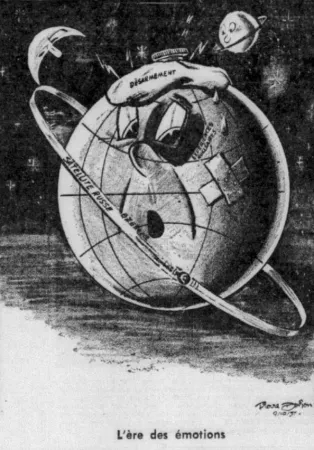



































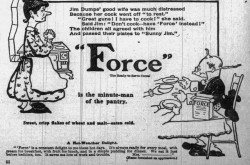
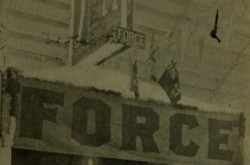
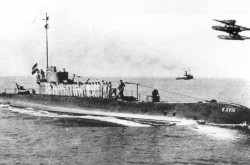
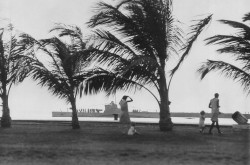
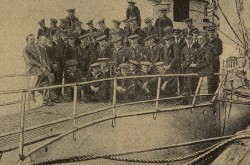
![A block of photographs showing some of the people involved in the bombing of beluga whales in the estuary and gulf of the St. Lawrence River. Anon., “La chasse aux marsouins [sic]. » Le Devoir, 15 August 1929, 6.](/sites/default/files/styles/thumbnail_7/public/2024-09/Le%20Devoir%2015%20aout%201929%20page%206.jpg?h=584f1d27&itok=TppdLItg)
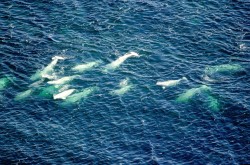
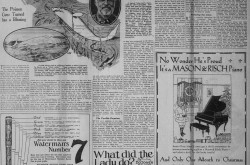

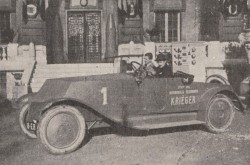
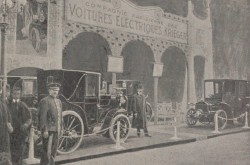
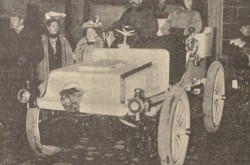
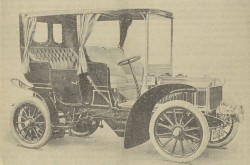

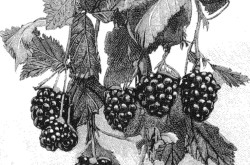
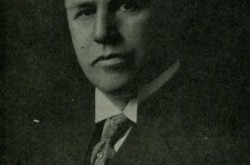
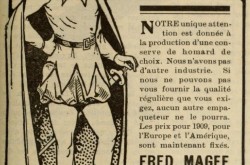
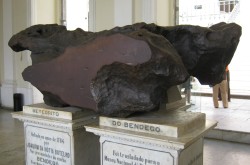
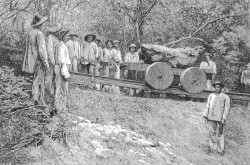
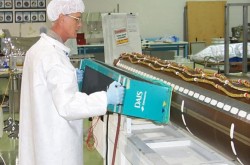

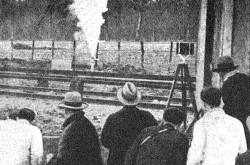
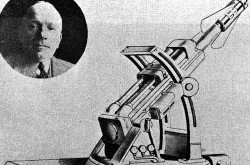
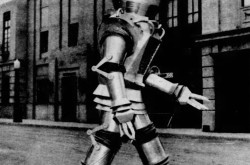

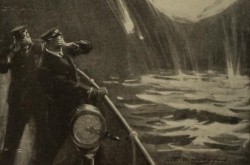
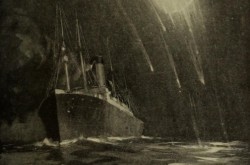
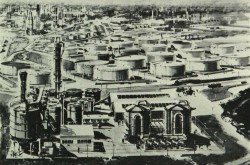

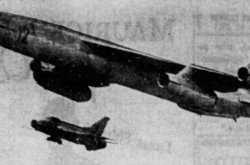
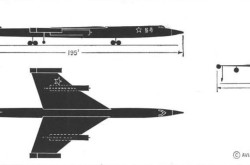
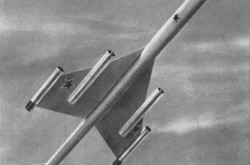
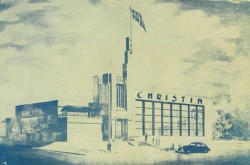
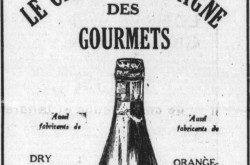
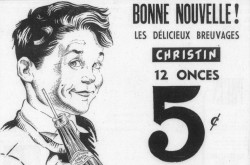
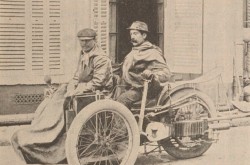
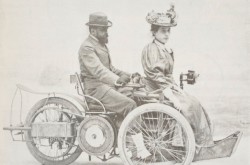
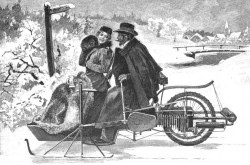
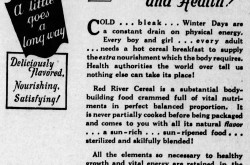

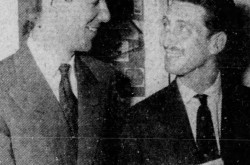
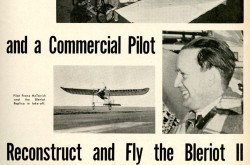
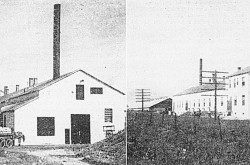
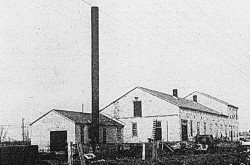



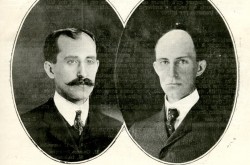

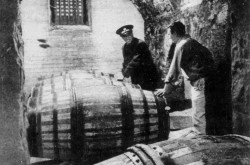
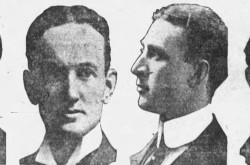
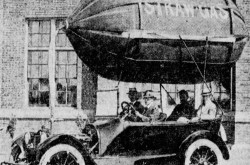
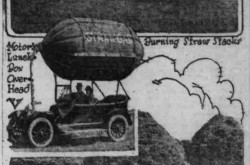
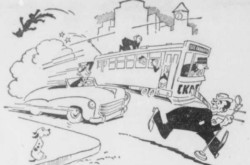

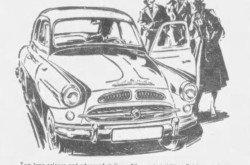
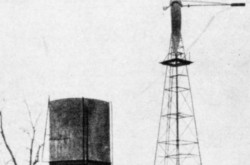
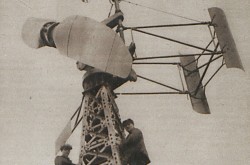
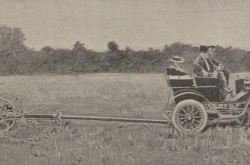

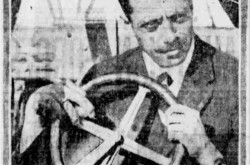
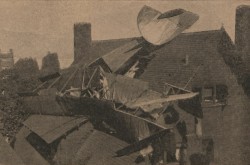
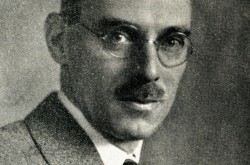
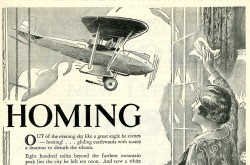
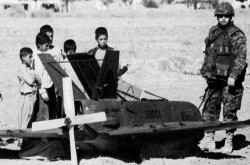
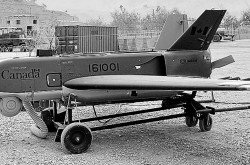
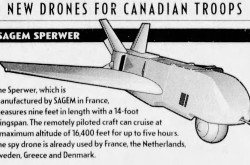
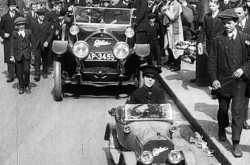
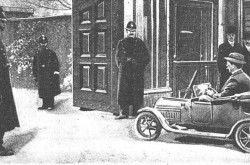
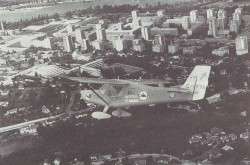
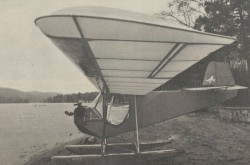

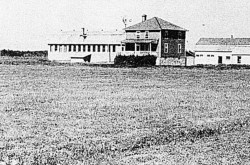
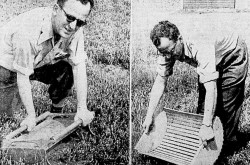
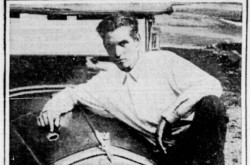
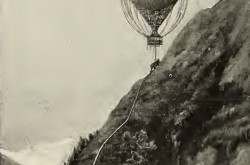
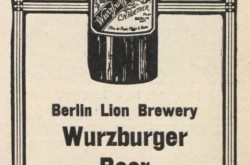

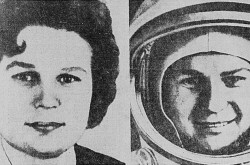
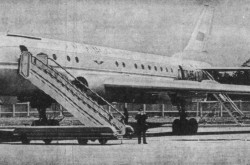
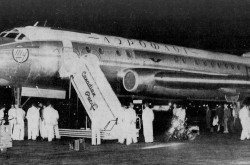
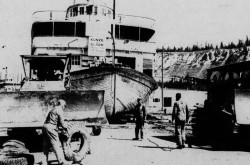
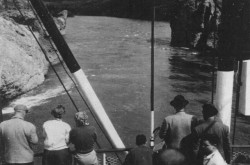
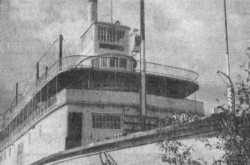
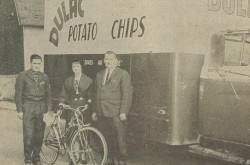
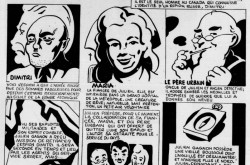
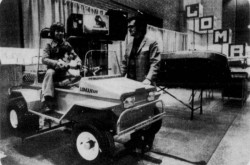
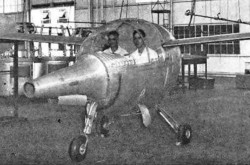
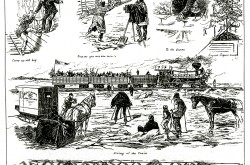
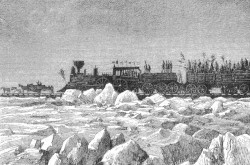
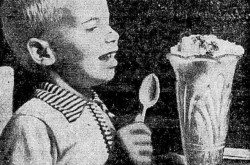
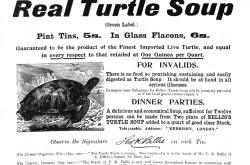
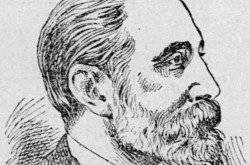
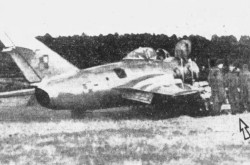
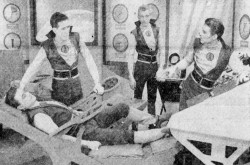
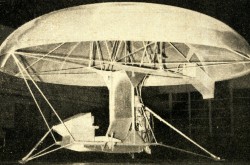
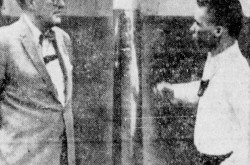
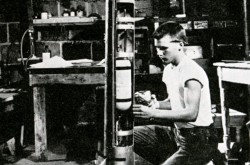
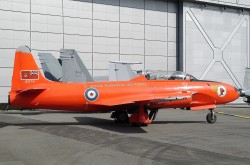
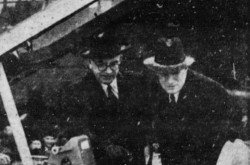
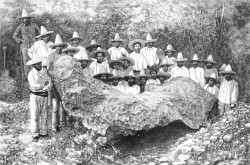
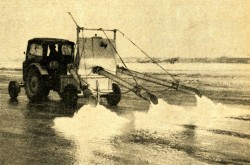
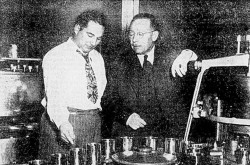
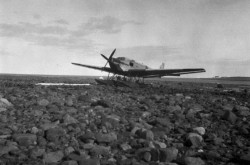
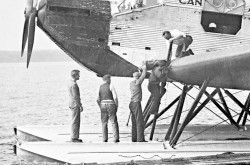
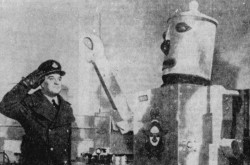
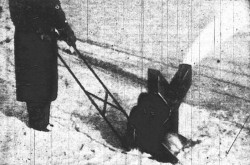
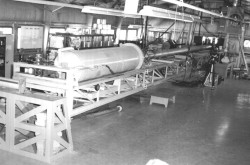

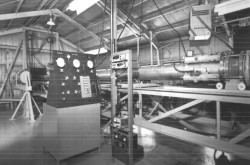
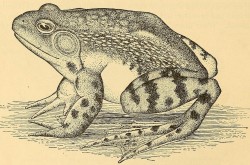
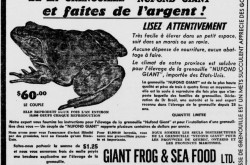
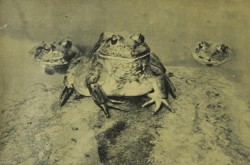
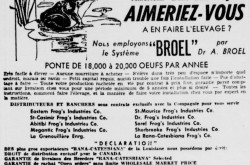
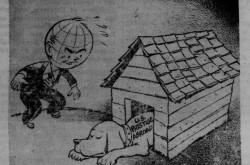
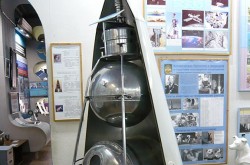
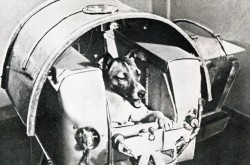
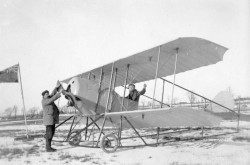
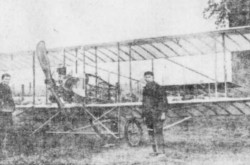
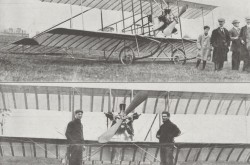
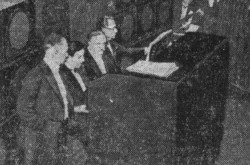
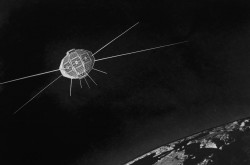
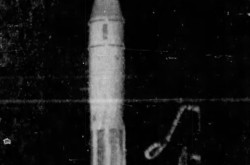
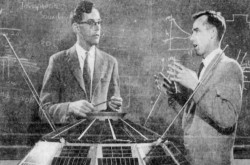
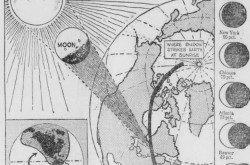



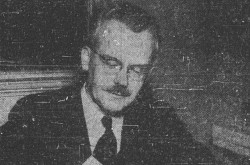
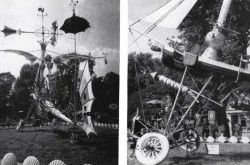

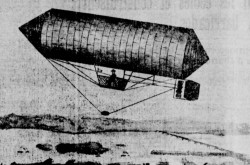
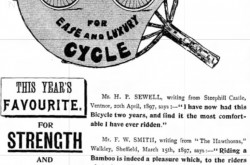
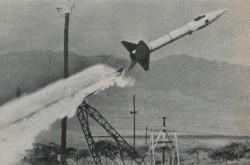
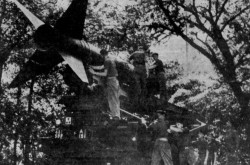
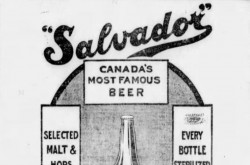

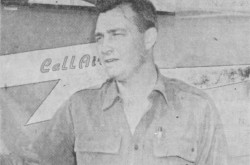
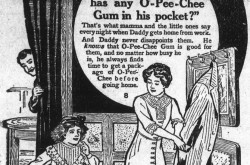
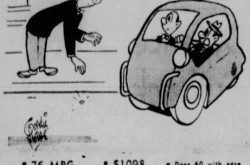
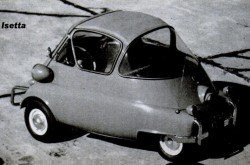
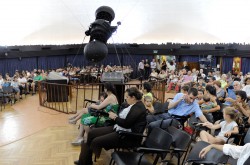
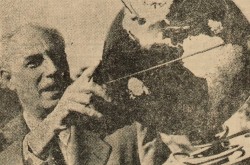
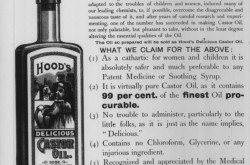
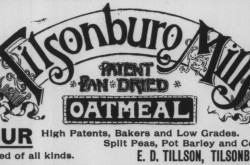
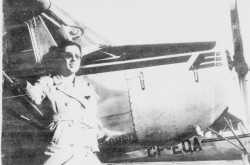
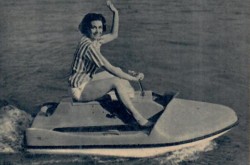

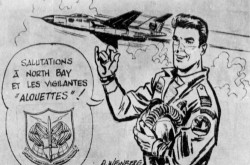
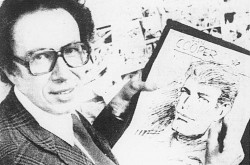
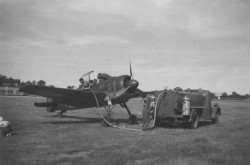

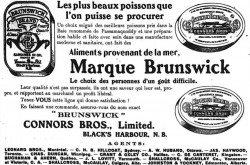


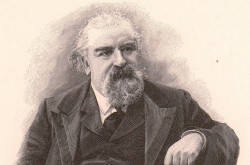
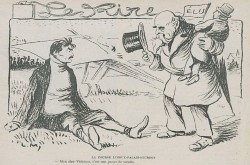
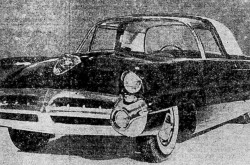
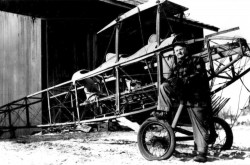

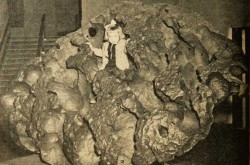
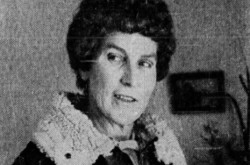
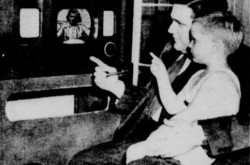
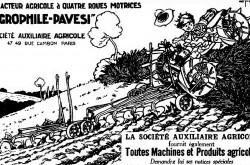
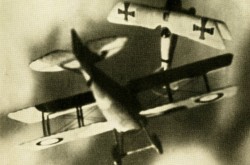
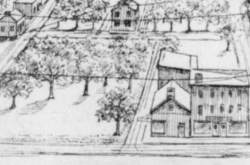
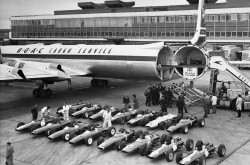
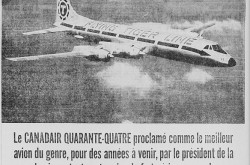
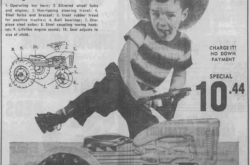
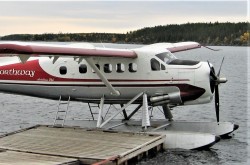
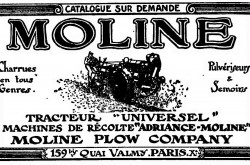
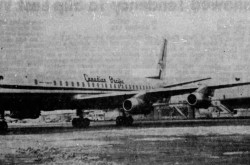
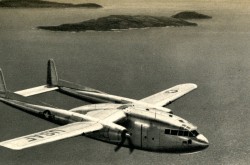
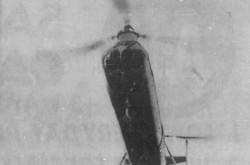

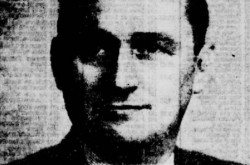
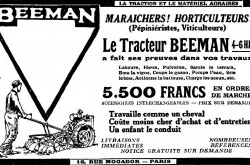
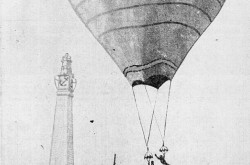

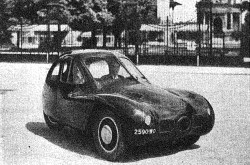
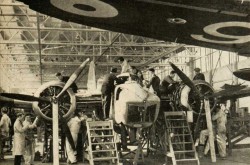
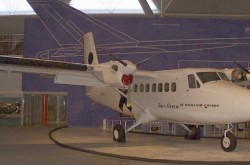
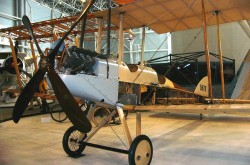
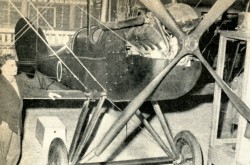

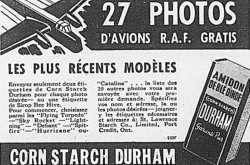

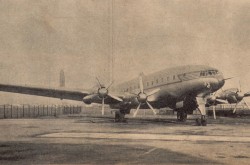
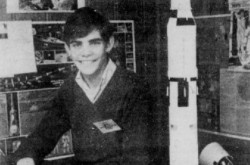
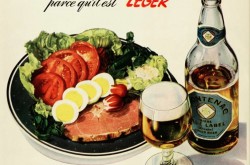
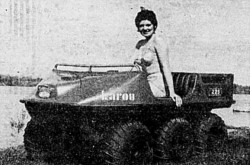
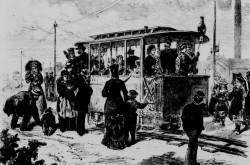
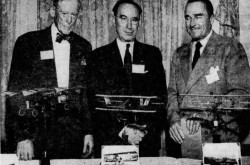

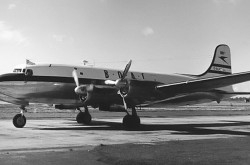
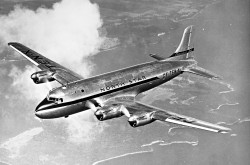
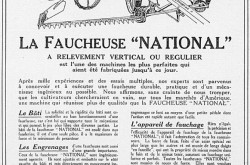
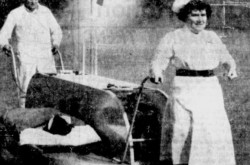
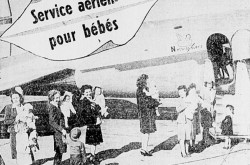
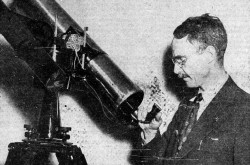
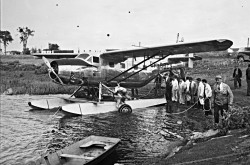
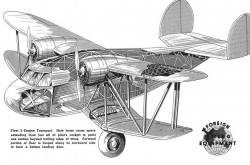
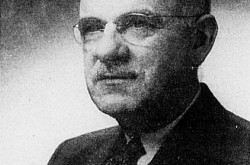
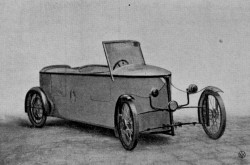
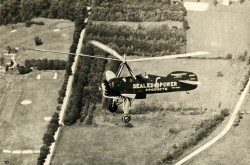
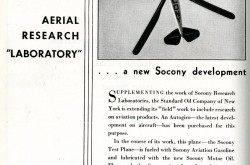
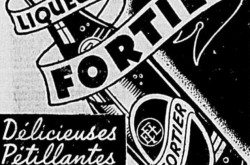
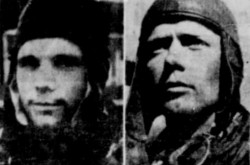
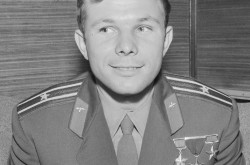
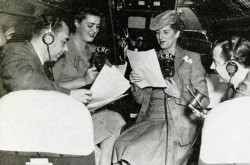
![Peter Müller at the controls [sic] of the Pedroplan, Berlin, Germany, March 1931. Anon., “Cologne contre Marseille – Le mystère du ‘Pédroplan.’ [sic]” Les Ailes, 2 April 1931, 14.](/sites/default/files/styles/thumbnail_7/public/2021-04/Les%20Ailes%202%20avril%201931%20version%20big.jpg?h=eafd0ed4&itok=WnBZ5gMf)
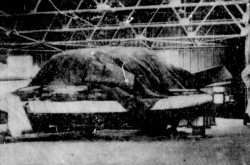
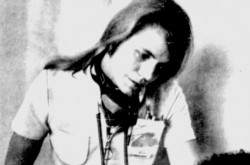
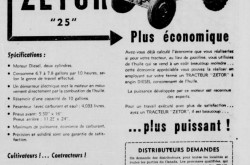
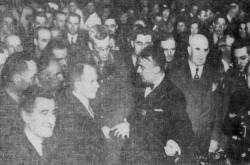
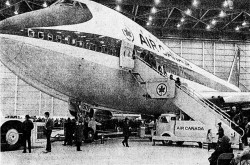
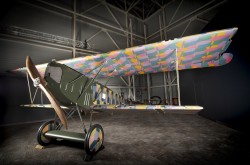
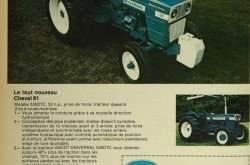
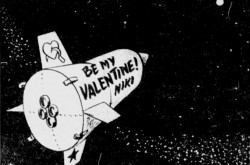
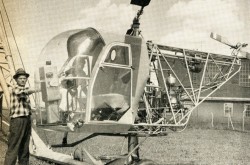

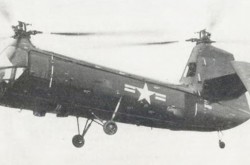
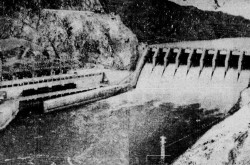
![One of the first de Havilland Canada Chipmunk imported to the United Kingdom. Anon., “De Havilland [Canada] DHC-1 ‘Chipmunk.’” Aviation Magazine, 1 January 1951, cover.](/sites/default/files/styles/thumbnail_7/public/2021-01/Aviation%20magazine%201er%20janvier%201951%20version%202.jpg?h=2f876e0f&itok=DM4JHe5C)
